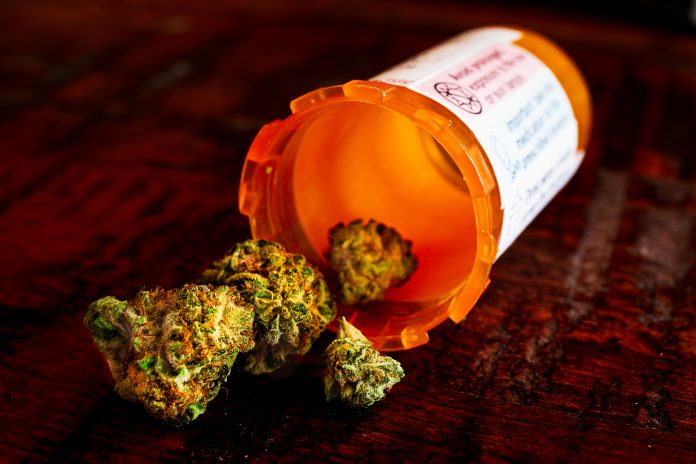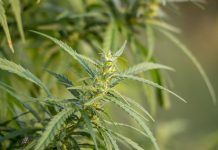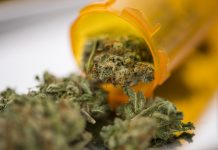Chronic pain is a debilitating condition that can be challenging to manage. We interviewed Libby Clarke and Alberto Sainz Cort to discuss the prevalence of chronic pain and opioid use in the United States, as well as medical cannabis as a potential treatment for pain
According to the Centers for Disease Control and Prevention (CDC), in 2021, around 20.9% of US adults (51.6 million people) experienced chronic pain.
A study from the National Institutes of Health NIH released earlier this year also found that new cases of chronic pain are more prevalent among US adults than new cases of several other common conditions, including diabetes, depression, and high blood pressure.
Almost two-thirds of those with chronic pain still suffer from it a year later. According to the National Institute of Arthritis and Musculoskeletal and Skin Diseases (NIAMS), back pain is one of the most common medical problems in the US, for which the risk factors can include fitness level, weight gain, stress, and age.
Though conventional treatments like nonsteroidal anti-inflammatory drugs (NSAIDs) are available, millions of Americans use opioids to manage chronic pain. Reports from the NIH estimate that five to eight million Americans use opioids for long-term management. While effective, opioids can be addictive. The US is currently experiencing an opioid overdose epidemic – in 2021 alone, over 75% of the 107,000 drug overdose deaths reported involved an opioid.
Therefore, patients with chronic pain in the US are in a Catch-22: They need effective treatments that mitigate the effects of debilitating conditions. However, the treatment prescribed could be deadly if consumption is mismanaged. The person becomes addicted, needing to take higher doses to achieve the same pain-relieving effects. On the other hand, alternatives such as medicinal cannabis are proven to be effective in the treatment of long-term pain, but their prescription and accessibility are heavily restricted.
Here, Libby Clarke (LC), Consultant for Toxicology at contract research organization (CRO) and scientific consultancy Broughton, and Alberto Sainz Cort (AS), Principal Scientist in Human Studies at Broughton, discuss the challenges in chronic pain management and medicinal cannabis as an additional treatment for pain.
What are the challenges of managing and treating chronic pain in the US?
LC: The main issue is that hospitals and healthcare facilities do not have many prescribing options outside of the opioid class of drugs for treating chronic pain, and opioids are extremely effective. Therefore, opioid drugs like morphine, diamorphine (medical heroin), oxycodone, and fentanyl are often prescribed for patients experiencing chronic pain.
However, this is fueling the opioid crisis – people are often unable to wean themselves off these medications, increasing the risk of addiction and drug-related death. This problem is compounded by the fact that it is relatively easy to obtain a prescription, opioids are fairly cheap, and there is a robust pharmaceutical supply chain.
AS: The European Union (EU) has never experienced an epidemic like this because opioid medications have always been heavily restricted. When managed correctly, opioids remain a very effective drug for treating pain but must be controlled.
Could the wider distribution of medicinal cannabis for treating chronic pain help alleviate the opioid crisis?
LC: Many scientific studies have demonstrated the effectiveness of cannabinoids, so a broader distribution network can only help alleviate opioid dependence.
A growing body of research demonstrates a synergistic and opioid-sparing effect of cannabinoids as an analgesic treatment. By prescribing cannabinoids as a dual treatment, patients can lower the opioid dose, which could reduce the chances of addiction and risk of overdose. For example, one systematic review and meta-analysis demonstrated that the morphine dose required to produce an equivalent analgesic effect was 3.5 times lower when co-administered with the delta-9-THC cannabinoid.
AS: The answer depends on the legislation and whether cannabinoid treatments are approved for medical use, while some research has found no improvement in opioid use after enabling cannabis access, the majority of studies support this synergy effect.
How does the legislative landscape in the US complicate the use of medicinal cannabis for medicinal purposes?
LC: The US has quite a fractured system regarding the legality of cannabis – it is currently illegal at the federal level but is being legalized by individual, often quite liberal, states. However, even in states where cannabis use is legal, technically, it still constitutes a federal offense.
Unified regulations would be a step in the right direction for opening the medical cannabis market, allowing doctors to prescribe these treatments. Products would need to meet a set of quality requirements, including a set level of tetrahydrocannabinol (THC) in prescribed treatments.
AS: I completely agree. In the EU, different countries have their own regulations – like the individual states – which has created a discrepancy across the EU. Some countries are on the way to legalizing cannabis for recreational use, like Germany; others have medical programs, like The Netherlands, and some not at all, like Spain. This means people who want access to the treatment may need to travel across borders.
Are there any side effects or safety issues associated with medicinal cannabis or cannabidiol (CBD) that patients may not be aware of?
LC: CBD generally has no side effects at low doses but carries gastrointestinal risks at high doses. Medical cannabis contains THC, which may cause dry mouth, diarrhea, increased appetite, drowsiness, and fatigue. Nausea and vomiting can also occur depending on how the treatment is consumed. THC is psychoactive and can cause disorientation, so it may impair driving ability.
AS: CBD also inhibits the hepatic enzyme CYP2D6, which means it can interact with other medications. However, it is usually considered safe in doses as high as 600mg.
Also, medical cannabis based on THC is not recommended for people with a family history of psychiatric conditions, such as psychotic and bipolar disorders.
How will the cannabis industry evolve in the US over the next few years?
LC: Over time, I would expect a change in legislation to favor the use of medicinal cannabis, but the challenge for manufacturers and regulators will be establishing a strong pipeline and defining the framework for product standards. Carrying out tests to validate compliance with relevant standards, such as testing for heavy metals and pesticides and maintaining product consistency, is key to developing this pipeline. Over time, production and compliance testing costs should fall, making medicinal cannabis far more accessible.
AS: It is hard to say for certain because regulations change so frequently. It is still unclear when exactly the US will reach a decision on legalizing medicinal cannabis at the federal level, so a lot of things hang in the balance.
The US must balance the treatment of chronic pain while keeping its opioid epidemic under control. When combined with lower doses of opioids, medicinal cannabis can be an effective analgesic treatment, but access to these drugs remains an issue. While the political situation is challenging, building a bank of empirical evidence can only help the medicinal cannabis cause.














